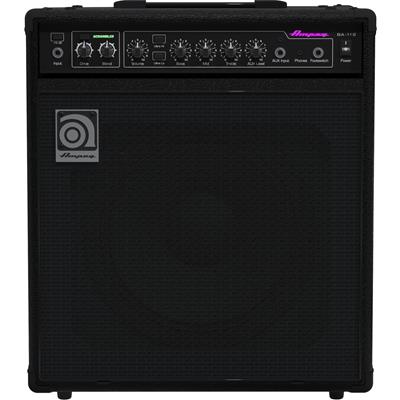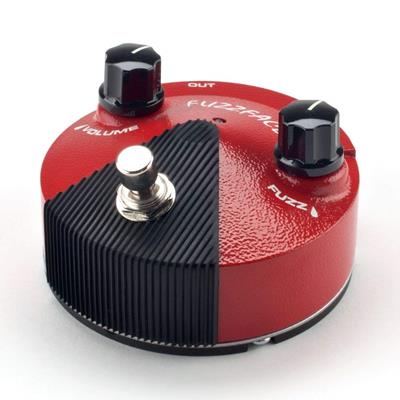When it comes to shaping your sound, the word you will hear the most is equalizing. There is nothing more elaborate than balancing out your tones according to your preferences. The job, which could have been overwhelming, is simplified by the concept of pedals. EQ features are conveniently integrated into a compact stomp box to simplify sound adjustment.
Even though there is a plethora of choices on the market nowadays, it is still possible to choose the best EQ pedal. Considering the price range and set of features, different pedals will satisfy different needs. If you want to learn more about EQ pedals and equalizing themselves or how to choose a suitable device, just keep on reading and hopefully, you will find THE ONE.
What’s The Best EQ Pedal
| Image | Amplifier Model | ||
|---|---|---|---|
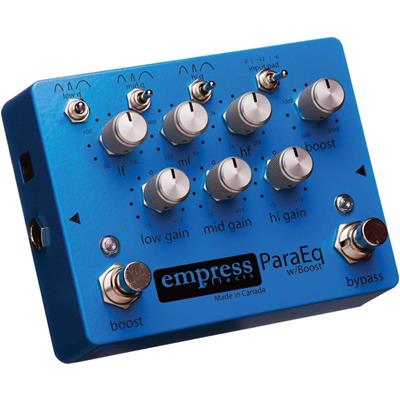 | Empress ParaEq with Boost |  (5 / 5) (5 / 5) | Check on Amazon |
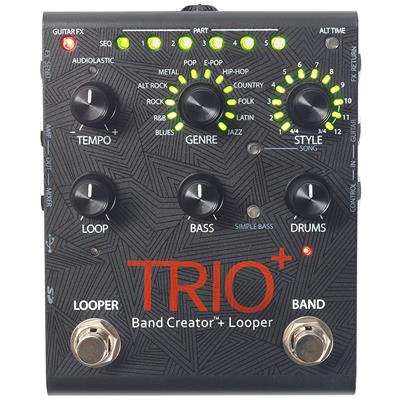 | Digitech TRIOPLUS Band Creator & Looper |  (4.9 / 5) (4.9 / 5) | Check on Amazon |
 | Source Audio SA170 Programmable EQ |  (4.9 / 5) (4.9 / 5) | Check on Amazon |
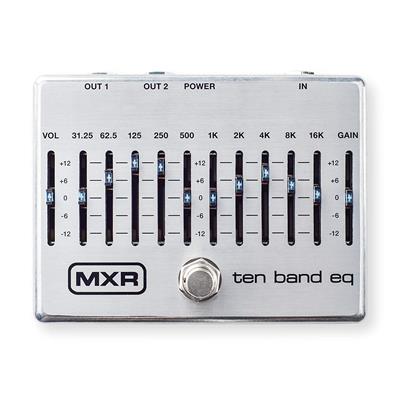 | MXR M108S Ten Band EQ Guitar Effects Pedal |  (4.9 / 5) (4.9 / 5) | Check on Amazon |
 | Boss GE-7 7-Band EQ Pedal |  (4.9 / 5) (4.9 / 5) | Check on Amazon |
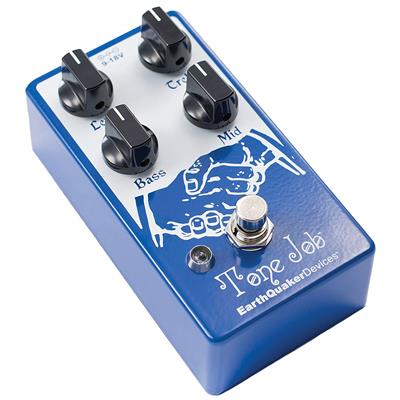 | EarthQuaker Devices Tone Job V2 EQ & Booster Pedal |  (4.8 / 5) (4.8 / 5) | Check on Amazon |
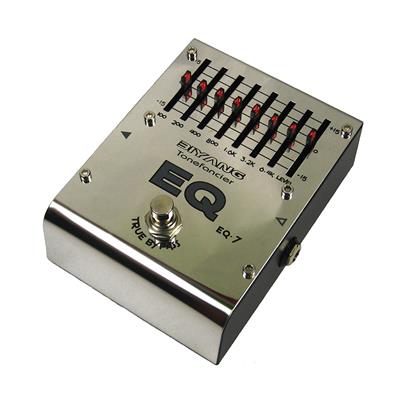 | Biyang Eq-7 for Guitar |  (4.8 / 5) (4.8 / 5) | Check on Amazon |
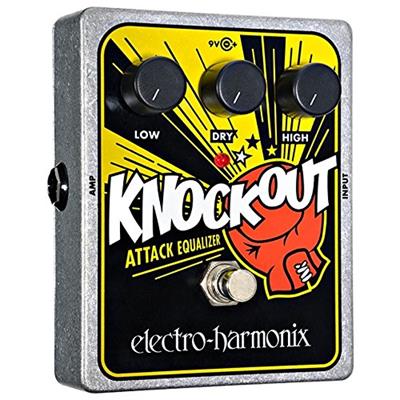 | Electro-Harmonix Knockout Attack EQ |  (4.7 / 5) (4.7 / 5) | Check on Amazon |
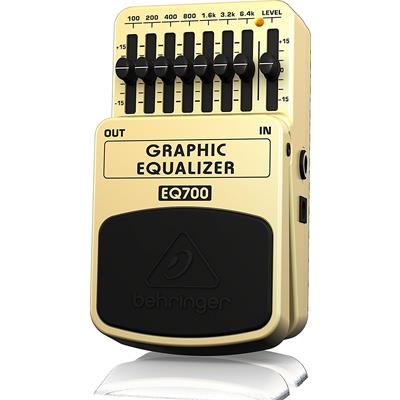 | BEHRINGER GRAPHIC EQUALIZER EQ700 |  (4.8 / 5) (4.8 / 5) | Check on Amazon |
 | Danelectro DJ-14C Fish & Chips 7 Band EQ Mini Pedal |  (4.7 / 5) (4.7 / 5) | Check on Amazon |
Empress ParaEq with Boost

The ParaEq w/boost provides you with all the tone-shaping features in a small package. It is equipped with quality components that guarantee transparency and very little amount of noise. It does not alter your original tone that much, it just makes it sound better. The ParaEq has a three-band EQ: the wide Q lets you create a more transparent sound, the medium Q balances out all the harshness or fading of the tone, and the narrow Q is good for evening out different frequencies and fighting feedback. Additionally, it has Boost control, which offers up to 30dB clean boost. The ParaEq is a true bypass, which means it will not affect or suck in your tones when turned off. With this pedal, you can expect flawless sound quality and minimal distortion, making it widely regarded as one of the top EQ pedals available in the market.
Pros:
- Does not have noise
- Versatile
- Extremely durable and solid
Cons:
- Does not have an additional volume control
- Takes time to adjust correctly
Digitech TRIOPLUS Band Creator & Looper

The TRIO+ is extremely versatile and one of the best EQ pedals. It serves as EQ and Looper at the same time. By pressing the Band footswitch, you can command it to learn your chords. This way you will have your own band in no time! This pedal has so many controls, you might get lost but, luckily, they are very easy to operate. With Tempo, Genre, Style, Loop Level, Bass Level, Drums Level, and Headphone Output Level controls you can adjust every single note in your music. What is more, you can turn into a guitar virtuoso by using various effects according to your genre (Blues, R&B, Rock, Metal, Pop, Hip-Hop and much more). The intelligent LED lights of this device will indicate the most suitable styles that complement your music. In terms of looping, the TRIO+ stands ready to assist you. This pedal encompasses all the features you have ever desired!
Pros:
- Extremely flexible
- Offers a lot of features
- “Band in a Box”
Cons:
- Not enough storage for loops
- Hard to perfect the rhythm in the playback
Source Audio SA170 Programmable EQ

At first glance, Source Programmable EQ might not seem like something unique and different. It has quite a mainstream design, but believe me, there is nothing ordinary or plain about this pedal. It has multiple readouts that are aligned to different frequencies (from 125 up to 8k). The Programmable EQ has two little buttons and a big encoder knob, which monitors the fluctuation of frequencies and lets you pick out individual ones. You will be able to see the shining lights of the Output knob (which adjusts the boost) from the universe, especially if you crank it up a notch. That is not all, the Programmable EQ has hidden gems as well: Octave Extension (gives you extra frequency control), Auto-Scroll (lets you get back to your saved settings and add them to your sound), Switching speed (modifies the speed of Auto-Scroll) All in all, this pedal gives you so much control, that you will go from zero to hundred in a blink of an eye!
Pros:
- Very easy to use
- Quality clean boost
- Noise-free
- Versatile
Cons:
- Not all settings are easily understandable
- Changing presets might be inconvenient during performances
MXR M108S Ten Band EQ Guitar Effects Pedal

When dealing with MXR pedals, it’s exceptionally difficult for things to go awry or spiral out of hand. Vice versa, M108S Ten Band EQ will give you all the frequency control you need. It offers a noise-free circuit, which will be silent as the grave. It has a dual output, allowing you to connect several signal chains to it. M108S is a ten band EQ, meaning that the frequency range fluctuates between 31.25Hz and 16kHz. Additionally, it has volume and boost controls, providing you with 12dB of boost on each frequency level. All these features are captured in a bulletproof body with a fancy design. This pedal makes profound changes to your sound, defines it more and takes it to a whole new level. M108S Ten Band EQ is one of the best EQ pedals on the market.
Pros:
- Bulletproof
- Full control over your tone
- True bypass
- Double output
Cons:
- LEDs might be too bright
Boss GE-7 7-Band EQ Pedal

BOSS GE-7 is the classic EQ pedal. Do not expect some fancy features and additional tricks with this one. It is definitely a one-trick pony but when it comes to getting the job done, it will not disappoint you. This is a 7-Band EQ with an extra Master Level slider, which allows you to take full control of your frequencies and eliminate all the chances of things going wrong. BOSS GE-7 can be used with any music from soft acoustic to violent genres. It can serve as a boost as well. Keep in mind that the latter will not break your windows, but it will provide your tone with a subtle boost. This is one of those pedals, that are not overwhelmed with settings and let you craft your sound with simplicity.
Pros:
- Extremely simple to adjust
- Reliable
- Durable (obviously, because it is the BOSS)
Cons:
- Can get a bit noisy
- Not very versatile
EarthQuaker Devices Tone Job V2 EQ & Booster Pedal

EarthQuaker Devices is here to guide you in achieving the perfect Tone Job (see what we did there?). This incredible two-in-one pedal seamlessly integrates EQ and Boost functions to deliver exceptional results. Unlike conventional sliders or buttons, the Tone Job features four highly interactive knobs that offer a dynamic and engaging experience. Bass, Mid and Treble control adjust different features while adding up to 20dB of cut or boost to your sound. The part where it all gets more interesting is the Level knob, which will produce a signal five times stronger than the original. With the Level knob, your sound will be heard over the horizon! Tone Job can be used in the front of the chain to clean up the initial signal, but it will be a great booster if you place it at the end. EarthQuaker is a renowned brand and it truly does stand by its quality.
Pros:
- Basically two pedals in one
- Sweet tone
- Simple controls with many functions
Cons:
- It’s easy to accidentally mess up the knobs
Biyang Eq-7 for Guitar

Biyang EQ-7 is a simple pedal at an affordable price. It has 7 EQ range controls, varying from 100hz up to 6.4k. Such a wide array of frequency adjustments allows you to shape your tone to your taste. It comes with an additional Level control, which boosts your signal and makes sure it is heard. The Biyang EQ-7 is illuminated with LEDs to guarantee maximum visibility during live performances. This pedal offers noise-free operation and a true bypass so that your tones do not get dirty or sucked up. The sound it produces is very musical and natural, pleasing the listeners as well as the players. In short, EQ-7 is a great value for the little money, offering you a lot of equalization without the need to rob the bank.
Pros:
- Good build-quality
- Noise-free
- Responsive
- Great tone
Cons:
- Does not come with a power supply
- Will not turn your world upside down
Electro-Harmonix Knockout Attack EQ

EHX Knockout Attack is not your typical EQ. Instead of graphic design, it has three knobs on the interface. It filters low and high frequencies with Low (85Hz) and High (6.5kHz) controls and blends dry and wet signals together with a Dry knob. This allows you to explore your sonic possibilities and create different effects. Additionally, Knockout Attack is a true bypass, enabling the transparent passage of the single. It tells you when it is activated with the help of LED lights. This pedal adds character and individuality to your sound. Be cautious, though. It can go from nice little EQ to a muddy beast very easily. If used properly, Knockout Attack can deliver powerful sound with little effort.
Pros:
- Lets you be creative
- Great value for money
- Quite versatile
Cons:
- Too sensitive
- Takes time to find precise adjustments
BEHRINGER GRAPHIC EQUALIZER EQ700

When it comes to quality pedals for a low price, Behringer holds its place steadily. Graphic Equalizer is an inexpensive version of the high-end pedals, offering just as much as any overhyped device out there. It comes with 7-band EQ, which not only shapes your sound, but also eliminates any lingering feedback in your tone. This pedal has a wide array of frequencies: you can create warm, thick tones from 200Hz to 400Hz and touch it up with clarity from 3.2kHz to 6.4kHz. All these adjustments work perfectly with pristine signals and might ruin your distortion with harmonics. Once you balance out all the settings, Graphic Equalizer will be ready to roll and equalize all of your harsh tones.
Pros:
- Adds presence to your sound
- Extremely affordable
- Sensitive frequency adjustment
Cons:
- Not great build quality
- Might develop some noise
Danelectro DJ-14C Fish & Chips 7 Band EQ Mini Pedal

If you have encountered Danelectro before, then you may already know that it is famous for its affordable price and funky design. By looking completely extraordinary, Fish & Chips catches your attention right away. When it comes to its features, there is nothing that different to say: it has a standard 6 band EQ along with additional Level slider, monitoring the level of the overall output. One important thing you should note: the build quality of this one is not that great, so be cautious and do not expect it to be built like a tank. Will it sound better than well-known (a bit more expensive) classics? No. Will it be a great bang for the buck? For sure. If you are on a budget and are looking for something simple, this pedal might be the one for you.
Pros:
- Great value for the money
- Cuts and boosts the tone
- Very quiet
Cons:
- Not very durable
- Not that powerful
What is an EQ pedal?
Equalization is something that will either turn your world upside down and make you sound professional as hell, or pretty much ruin your tone. The effect itself strives for achieving the balance between different frequencies of your sound. An EQ pedal does the same job: it adjusts your audio signal with just a press of the foot and a simple slide of the sliders. Typically, you can control each and every frequency range and tailor it to your preferences. The right utilization will give you excellent results by producing a sound steeped with precision, presence, and definition. So, if you want to know how to make the best of an EQ pedal, then keep on reading!
Placement of EQ pedal
The recommended way of using an EQ pedal is by placing it after a fuzz, distortion, overdrive, and boost pedals. In this case, it will allow you to shape the tone coming out of your effects pedals and add some final touches to it. Basically, an EQ pedal will control the bass and treble in your distorted or boosted signal, balance out harsh frequencies or cut off unwanted sizzle from high ends. This method of placement gives you the opportunity to take your tone to a whole new level. One more thing, if you fancy David Gilmour, you should probably know that this is exactly how he utilizes his EQ pedals!
If you do not want your pedalboard to be “overcrowded” with pedals, then just use an EQ to boost your sound. For this, put your EQ after a high-gain overdrive and let it amplify your solos. Or you can place it in front of the chain to add some boost and presence to your pristine tone. Either way, it can make a significant difference when it comes to boosting your signal.
One more way to use your EQ pedal is to place it at the end of the chain after all the modulation effects and delays. It will turn into a magic wand that will balance out all the lumpiness and uneven frequencies and sculpt the whole signal wonderfully. It can even be utilized to assist the amp with all those difficult frequencies just to make sure that your notes are not sucked up. This gives you a chance to produce studio-quality sound without much effort.
Different effects that you can create with EQ pedals
Even though a typical EQ pedal is not equipped with a lot of features or effects, you can use even the simplest one to create your unique audio effects. For instance, the Telephone/AM Radio, which do exactly what they sound like or Scooped Mids, which drops the mid-range frequencies and boosts lows and highs, recreating something resembling Metallica or Slayer.
More “drastic” effects include Self-Oscillating Noise, which is not a typical effect. You connect one output to the speaker and the other to the input. This way you create a feedback loop, competing different frequency signals for dominance. This is a very interesting effect with unpredictable outcomes. If you are an adventurer, you should definitely try this one.
As we have already mentioned above, EQs can be used along with distortion pedals to create different effects, for example, add some sludgy grunge to your fuzz or create scooped mids. You can even create tremolo or vibrato using EQ pedals (SA Programmable EQ will be of great help in that case).
Creating different effects with your EQ pedals will allow you to fully explore your sonic possibilities and take your sound to unimaginable places. This is the case where you do not really need fancy features implemented in a pedal, you just need your imagination and creativity, and, trust me, you will achieve astounding results.
Conclusion
To conclude everything mentioned in the article, when it comes to music, nothing is clear-cut and definite. What you thought would be perfect for you, might just turn out to be wrong. The most important thing to keep in mind is to do thorough research, listen to demos and not only that, plugin different pedals and see, which of them complements your sound in the most unique way. And one more thing, when it comes to EQ pedals, even the best one will not work for you unless you find a silver lining. Do not get overboard and let the device rock your world.

